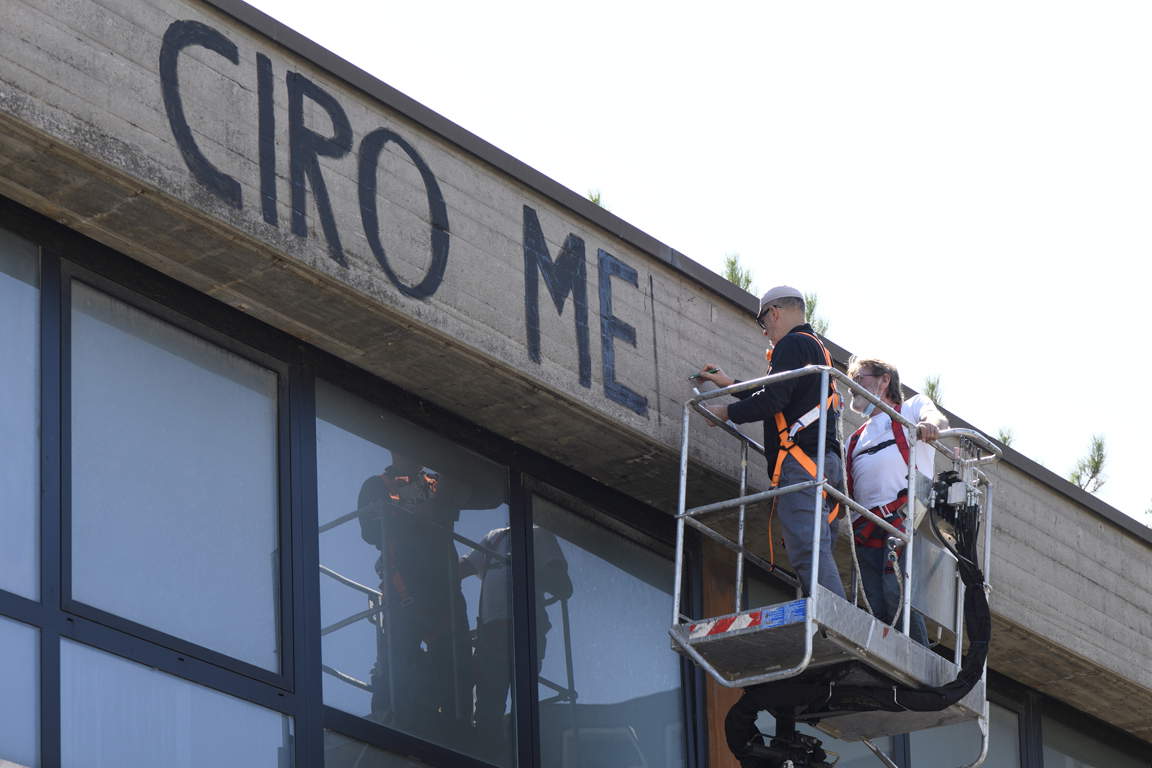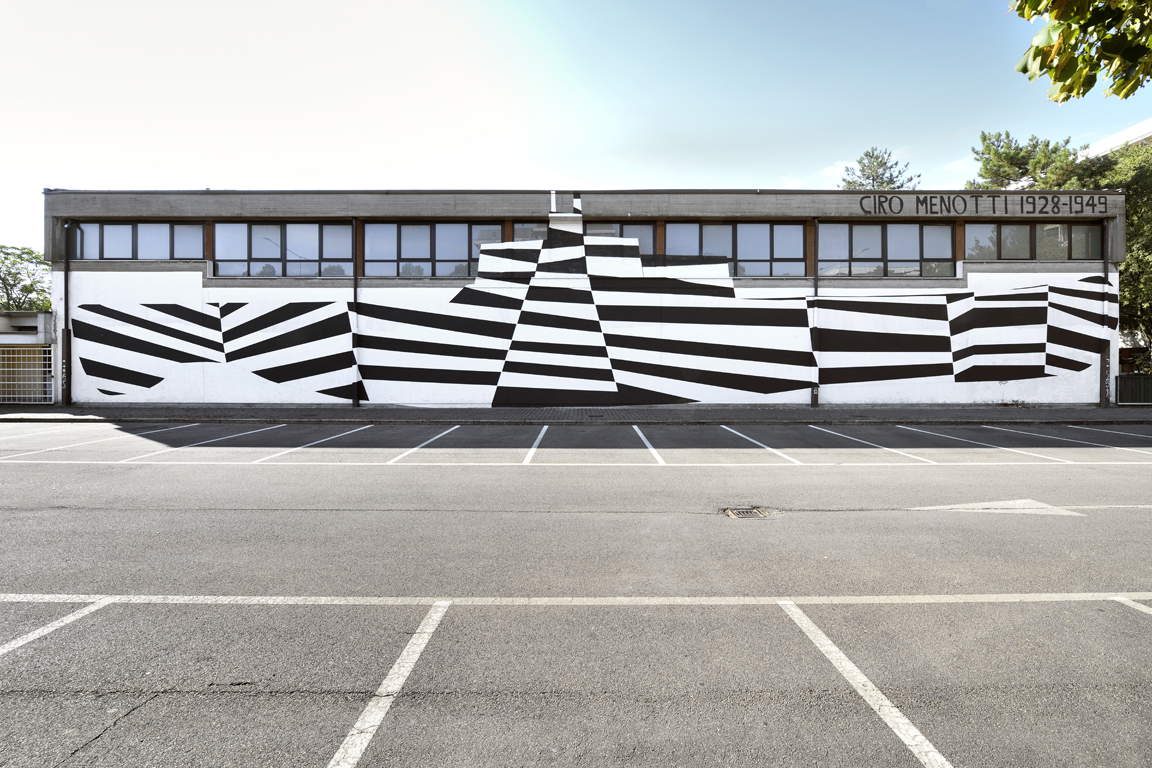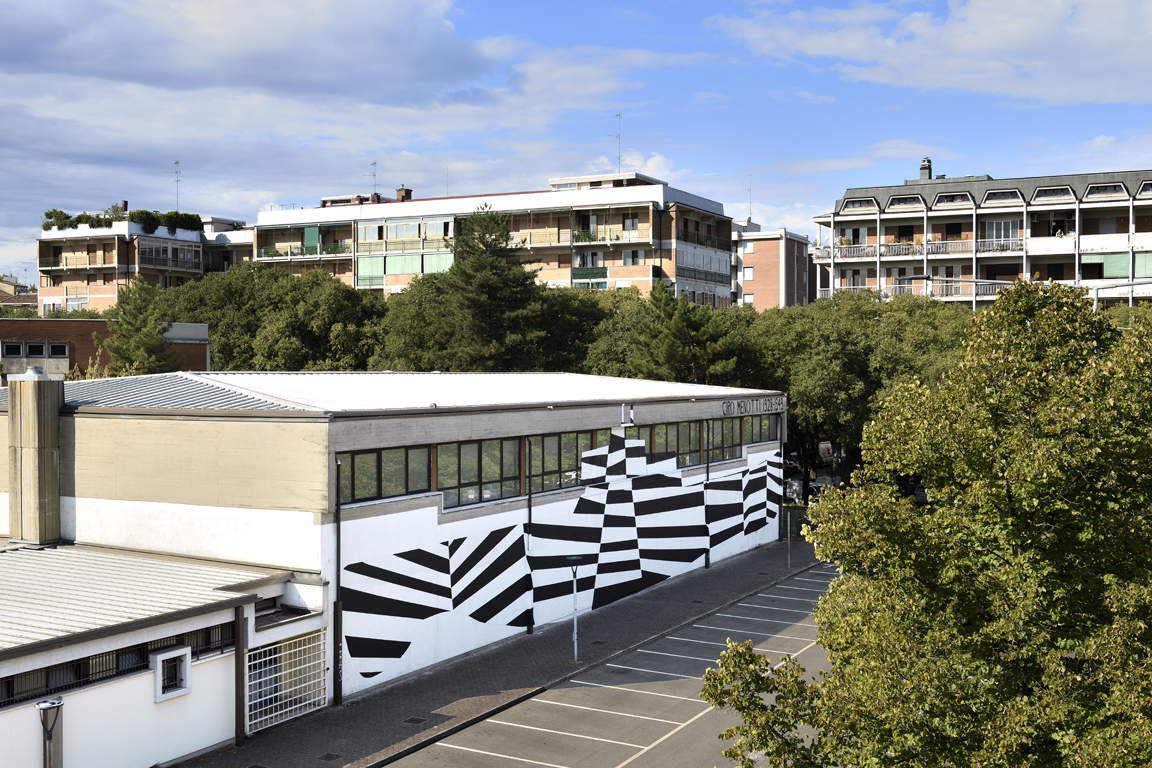For the XXI edition of festivalfilosofia, held Sept. 17-19, 2021 between the cities of Modena, Carpi, and Sassuolo, artist Flavio Favelli (Florence, 1967) was invited by the Museo Civico di Modena to design a work on the theme of festivalfilosofia 2021, freedom, and on the figure of Ciro Menotti. Favelli thus brought a submarine to Modena, a mural work that will be permanently visible on the outer wall of the Panaro Gymnasium. Ciro Menotti 1928-1949, this is the title of the monumental work, will be unveiled on Friday, September 17 at 11 a.m. in the presence of the artist. The project is curated by Serena Goldoni and Cristina Stefani. We asked Flavio Favelli a few questions to let him tell us more about his project and his work. The interview is curated by Ilaria Baratta.

IB. On the occasion of the festivalfilosofia, this year dedicated to the theme of freedom, you were invited to create a work that linked this theme to the figure of Ciro Menotti, the patriot of the 1831 uprising who was executed right near the Cittadella where your Ciro Menotti 1928-1949 will be permanently visible. Actually, his work does not depict the patriot, but a submarine that can be traced back to the fascist era. Why did you make this choice that might be misleading to the public?
FF. I think the artist should never answer literally and appropriately. I don’t do commissioned works; the idea of the Renaissance artist is disqualifying. You have to try to turn the tables, to respond differently, inconsistently, to the purpose of an articulated work. I proposed a mural painting (no “s,” please), one of the most difficult things to do today, far from the generally creative imagery of current street art. I have long been interested in military themes, so I painted a 40-meter-long submarine in Modena, the Ciro Menotti. The idea of the submarine is not in relation to the matter of fascism, but to the military world and the Regia Marina, an obsolete name that recalls a time and a history of a huge catastrophe that has been removed. It is the artist who puts his hands in the removed. The public, then, the more misguided the better; there is already TV, media, social, internet, press, major exhibitions, and politics that put them on the ’right’ path, if an image leads them away from the straight and narrow, it seems to me an interesting thing, unless you want to treat the public as a mere puer aeternus. Contemporary art is elitist by its very nature, but not in the sense of a VIP card or a credit card, but of the ability to take up challenges, think concepts and ask questions in dialogue with the work, and this is perhaps a problem for audiences raised on seventy years of TV. If there is a bogeyman for politics, street art and the public, it is the term ’conceptual,’ perceived as if it were a bad word, but the concept, the meaning are important. However, better to take the public off the roadway than to take them through the toll booth.
In addition to the conceptual point of view, his work that will stand out on the outer wall of the Panaro Gymnasium is also meant to be misleading from a technical point of view, as it is made through the razzle dazzle technique, which means “trap,” patented to disguise World War I naval ships through simple black-and-white marks. Why did you choose this particular technique?
I have to say that this technique is one of the most interesting chores precisely because of its military use. The images of large warships painted in stripes are truly ’disarming’. It is perhaps the only time that an artists’ experimental imagery (the camouflage used by the military was invented by Cubist painters) was used for something as ’serious’as war. Picasso himself worked on this. But beyond the artists’ experience, the fact that in this case the artist encounters the military world is decisive. I think there are no more distant fields from each other, in today’s society, the visual artist (despite street art, Banksy, auctions making headlines) continues to play a minor role, until he becomes a master after the age of eighty, while the military is the most normal thing there is (we always had a classmate or classmate with a military dad) and then is there anything more obvious and regular than war? From the Bible and the Iliad until today, hasn’t it always been a great classic? War is the one event that is always the same that accompanies humanity. I like this simple technique that deforms volumes. I must say that the best effect is with three-dimensional works. Let’s say he makes it a ghost of the submarine, and ghosts always say something.



CiroMenotti 1928-1949 inevitably leads to reflections on memory and its distorted appropriation. Is this the intent of the work? What themes did you want to address through your work?
That is not the point; if anything, it is understood and comes later. Memory is a necessity of the institution and politics, and I don’t think art should try to reflect on memory, but simply, without having that as an end, it pulls it in because it is in the very nature of art to pull things in and it activates not only the ’right’ memory, but also the ’wrong’ memory. Art does not pose the question between ’right’ and ’wrong,’ between ’good’ and ’evil, ’ because art does not adhere to reality, but stands on another plane. The point is a submarine in Modena, which is then a certain submarine, with its own history, name and imagery. The artist does not work for society or the public or the territory, but for art, which must remain in its Pandora’s Box.
The military theme is a complex one to deal with: how does an artist generally approach it and how do you approach it?
I’ve been approaching the military theme (I did a long project on Italian soldiers and I’m going to talk about it right at the festival) for a long time for two reasons: because my grandfather had gone (and returned) to the Russian campaign with a picture of him in uniform, which always gave me trouble, because he looked even better in uniform. And because the world of Mars is ambiguous, troubles consciences, has a strong aesthetic and is, like it or not, our greatest tradition: war is eternal, it is part of our society, even if the civilized one thinks it is immune to it (but don’t the famous Hermès scarves with equestrian bridles and plumes celebrate the adornments of chivalry, for a few millennia now the spearhead of the art of war?). The military world is a distant world, archaic and modern-technological at the same time. I also believe that in art, conflict is one of the truest and deepest themes; without a conflict with my family and the land where I grew up, I probably would not have made artwork.
What role should the artist and art play today, in your opinion?
I don’t know what role, but I do know that the distance of the meaning of art from society, it seems to me, despite the much information we have, more pronounced. It is no accident that street art has become popular and used by corporations and politics to celebrate; the art that goes into the media is too often creativity devoted to a useful project for society or that which makes a mess. I have been doing paintings on public walls for many years (and so many projects have been rejected and censored by administrations), because it seems to me that it is the most difficult and at the same time the most compelling exercise to do, because exhibitions in places designated for art are now too rarely interesting moments. What role? Mah... it seems to me that in this time of ’real populism’ art is confined to its system and perhaps it is art itself that is asking for it because it is too comfortable with it. Of course it is hostage to the market, today is the time where museums ask for help from private galleries to make exhibitions, but free zones are there, which certainly do not lie in street art or public art, but lie in projects outside the museum and also (but look at that) in the works. Who looks carefully at the works anymore? Who talks about the works? Recently someone said that “art has power only in the world of collectors.” It takes great care to try to balance between two moments: the work on a white wall and the work to be placed outside, outside the place designated for art. It is a long, endless oscillation that can take an entire existence.
Warning: the translation into English of the original Italian article was created using automatic tools. We undertake to review all articles, but we do not guarantee the total absence of inaccuracies in the translation due to the program. You can find the original by clicking on the ITA button. If you find any mistake,please contact us.